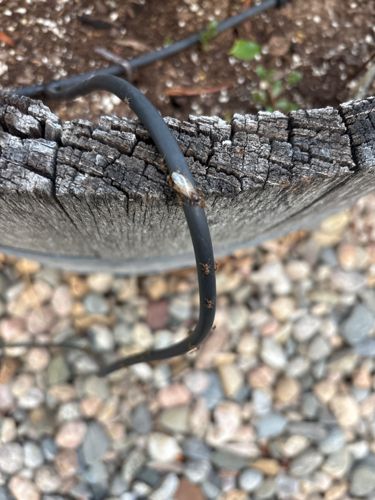Ant
Scientific Name: Formicidae (family, specific species cannot be determined from the image alone)
Order & Family: Order: Hymenoptera, Family: Formicidae
Size: Typically 1 "mm" to 30 "mm" (0.04 "in" to 1.2 "in"), depending on the species. The ants in the picture appear to be on the smaller side, likely a few millimeters in length.

Natural Habitat
Ants are highly adaptable and can be found in almost all terrestrial habitats worldwide, from forests and grasslands to urban environments. They typically build nests in soil, under rocks, in rotten wood, or within structures. The ants in the image are shown on a drip line, suggesting they are foraging in an outdoor, possibly garden or landscaped, setting.
Diet & Feeding
Ants are omnivores; their diet varies greatly by species but often includes nectar, seeds, fungi, other insects (both living and dead), and honeydew produced by aphids or scale insects. The ants in the image appear to be small and reddish-brown, which is characteristic of several common ant species.
Behavior Patterns
Ants are social insects that live in colonies, which can range in size from a few dozen to millions. They exhibit complex social structures with different castes (queen, workers, males) having specific roles. They forage for food, create intricate nest tunnels, and communicate through chemical signals (pheromones). They are known for their organized trails and cooperative carrying of food items.
Risks & Benefits
Risks: Some ant species can be pests in homes, contaminating food. Certain species, like fire ants, deliver painful stings. They can also farm pests like aphids, protecting them from predators to harvest their honeydew. Benefits: Ants play important ecological roles including soil aeration, seed dispersal, nutrient cycling, and preying on other insect pests.
Identified on: 8/29/2025